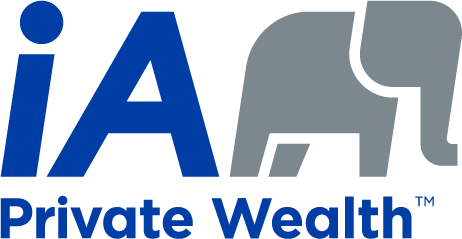Subscribe To Our Newsletter
Subscribe To Our Newsletter
Subscribe to our newsletter and receive free educational articles and videos each month.
Subscribe to our newsletter and receive free educational articles and videos each month.
Main Menu
Financial Foundations: RRSPs
Hi! I’m Nick, and welcome to Financial Foundations. I’m going to cover several concepts of investing that may seem confusing and show you that they’re actually simpler than you think. Let’s talk about RRSPs.
An RRSP, or Registered Retirement Savings Plan, is a special type of tax-preferred investment account that was established in 1957 to encourage Canadians to save for retirement. The main benefit of an RRSP is the tax savings that you can achieve both now and in the future.
When you make a contribution to an RRSP you can receive immediate tax savings on the amount you contribute. Let’s look at an example to get a better understanding.
Let’s say that you earn a salary of $44,000. The maximum that you can contribute to an RRSP is 18% of your earned income. In this example, that would be $7,920.
Suppose that today you contribute $6,000 to your RRSP. If you are a BC resident then your marginal tax rate would be 22.70%. You would not be taxed on that $6,000 you contributed, which means that you would not have to pay $1,362 in taxes to the government. We get this savings figure by multiplying $6,000 by 22.70%.
Another benefit of opening an RRSP is that you don’t have to pay tax on the money that you earn from your investments within the RRSP, whether that be from interest, dividends, or capital gains.
These earnings can take advantage of the power of compounding in a tax-free environment for many years until you withdraw your money from your RRSP. This tax-deferred growth can allow your RRSP investments to potentially grow much faster than by owning the same investments in a regular taxable investment account.
You can contribute to an RRSP in any year that you’ve earned income from a job or business, up to and including the year you turn 71.
Now, whenever you decide to withdraw money from your RRSP, you will have to pay tax on it as the government counts this money as income. Therefore, RRSPs are generally most suited for your long-term goals such as retirement.
However, there is an exception to this rule. If you are considered to be a first time home buyer, you are allowed to borrow up to $25,000 from your RRSP to use towards the down payment of your new home. You will not be taxed on this loan from your RRSP, provided that you pay back a portion of the loan each year, paying back the entire amount within 15 years.
There’s RRSPs for you! I’m Nick and thanks for joining me on Financial Foundations. See you next time!
Financial Foundations: RRSPs
Hi! I’m Nick, and welcome to Financial Foundations. I’m going to cover several concepts of investing that may seem confusing and show you that they’re actually simpler than you think. Let’s talk about RRSPs.
An RRSP, or Registered Retirement Savings Plan, is a special type of tax-preferred investment account that was established in 1957 to encourage Canadians to save for retirement. The main benefit of an RRSP is the tax savings that you can achieve both now and in the future.
When you make a contribution to an RRSP you can receive immediate tax savings on the amount you contribute. Let’s look at an example to get a better understanding.
Let’s say that you earn a salary of $44,000. The maximum that you can contribute to an RRSP is 18% of your earned income. In this example, that would be $7,920.
Suppose that today you contribute $6,000 to your RRSP. If you are a BC resident then your marginal tax rate would be 22.70%. You would not be taxed on that $6,000 you contributed, which means that you would not have to pay $1,362 in taxes to the government. We get this savings figure by multiplying $6,000 by 22.70%.
Another benefit of opening an RRSP is that you don’t have to pay tax on the money that you earn from your investments within the RRSP, whether that be from interest, dividends, or capital gains.
These earnings can take advantage of the power of compounding in a tax-free environment for many years until you withdraw your money from your RRSP. This tax-deferred growth can allow your RRSP investments to potentially grow much faster than by owning the same investments in a regular taxable investment account.
You can contribute to an RRSP in any year that you’ve earned income from a job or business, up to and including the year you turn 71.
Now, whenever you decide to withdraw money from your RRSP, you will have to pay tax on it as the government counts this money as income. Therefore, RRSPs are generally most suited for your long-term goals such as retirement.
However, there is an exception to this rule. If you are considered to be a first time home buyer, you are allowed to borrow up to $25,000 from your RRSP to use towards the down payment of your new home. You will not be taxed on this loan from your RRSP, provided that you pay back a portion of the loan each year, paying back the entire amount within 15 years.
There’s RRSPs for you! I’m Nick and thanks for joining me on Financial Foundations. See you next time!

